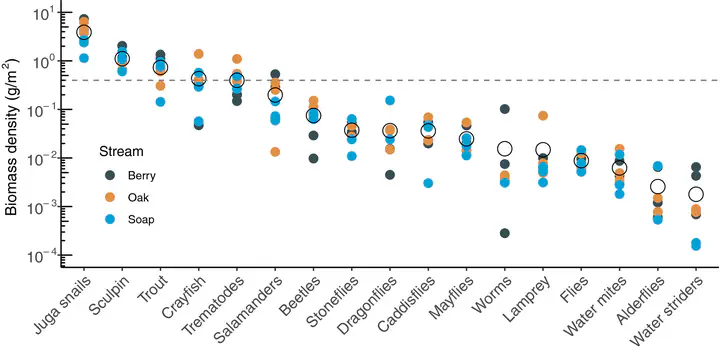Trematode parasites exceed aquatic insect biomass in Oregon stream food webs

Abstract
Although parasites are increasingly recognized for their ecosystem roles, it is often assumed that free-living organisms dominate animal biomass in most ecosystems and therefore provide the primary pathways for energy transfer. To examine the contributions of parasites to ecosystem energetics in freshwater streams, we quantified the standing biomass of trematodes and free-living organisms at nine sites in three streams in western Oregon, USA. We then compared the rates of biomass flow from snails Juga plicifera into trematode parasites relative to aquatic vertebrate predators (sculpin, cutthroat trout and Pacific giant salamanders). The trematode parasite community had the fifth highest dry biomass density among stream organisms (0.40 g/m2) and exceeded the combined biomass of aquatic insects. Only host snails (3.88 g/m2), sculpin (1.11 g/m2), trout (0.73 g/m2) and crayfish (0.43 g/m2) had a greater biomass. The parasite ?extended phenotype?, consisting of trematode plus castrated host biomass, exceeded the individual biomass of every taxonomic group other than snails. The substantial parasite biomass stemmed from the high snail density and infection prevalence, and the large proportional mass of infected hosts that consisted of trematode tissue (M = 31% per snail). Estimates of yearly biomass transfer from snails into trematodes were slightly higher than the combined estimate of snail biomass transfer into the three vertebrate predators. Pacific giant salamanders accounted for 90% of the snail biomass consumed by predators. These results demonstrate that trematode parasites play underappreciated roles in the ecosystem energetics of some freshwater streams.